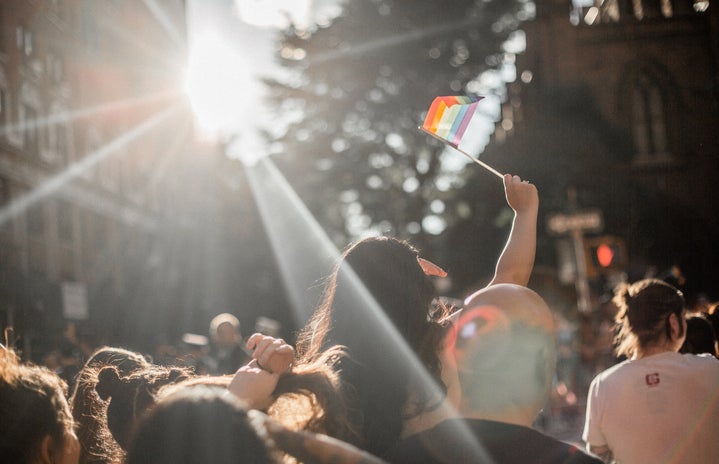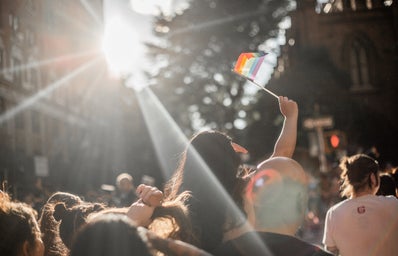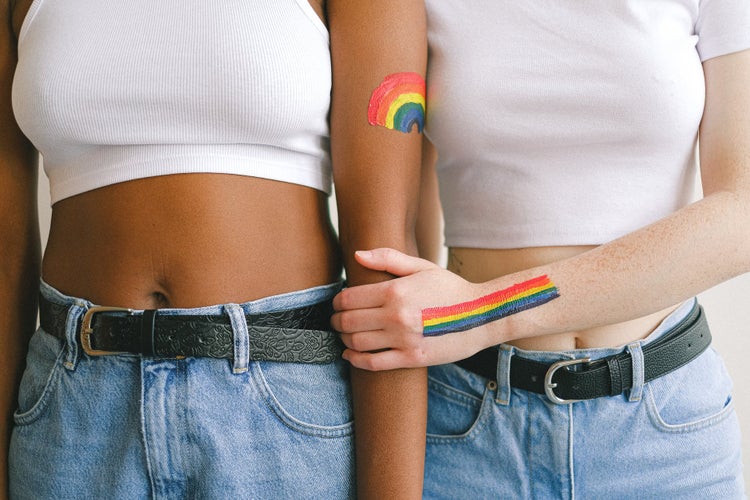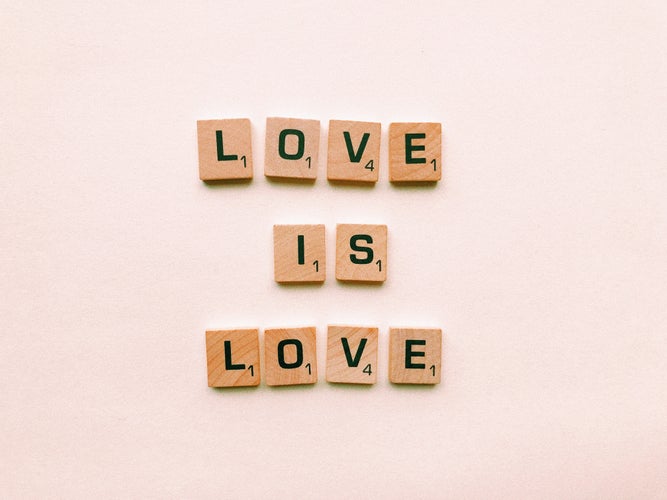Have you ever looked at a menu, your hunger nagging at you to order, but there are too many items that sound so delicious? You’ve finally narrowed it down to two options, wishing you could have a little of both, knowing the waiter will be there any moment to ask for your choice, but you’re still stuck in-between this or that?
My entire life has been a series of in-betweens, so much so that sometimes it feels like a sick joke. I came to the realization that I was queer when I was 13 years old. It wasn’t particularly difficult for me to accept. I was fortunate enough to have grown up surrounded by other queer individuals and an accepting family, so I felt comfortable in my self-discovery. At the time, I looked into a pool full of labels, stuck my hand in, and found the one that I thought defined my sexuality best: bisexual. I thought, I like boys but I like girls too, and bisexuality was the only word in my vocabulary that matched that. So I wore that label, I wore it for a long while, and my mind contextualized this label as somewhere in-between straight and gay.
It wasn’t until later, when I had experienced a little more of the world, that the label pansexual started swimming around in my head like a little fish. I could be attracted to who someone was a cis-gendered male or female and I could be attracted to someone who was transgender, non-binary, or somewhere in-between. It didn’t really matter to me. I simply realized that my attraction was not dependent on gender. At the time, the best word I knew for that was pansexual: someone who was attracted to all-genders. Yet, bisexuality and pansexuality overlap in many ways. Those who identify as bisexual can also be attracted to multiple genders, even though many would consider that pansexual. So, what was the true meaning of these labels? And how could I finally find a term that fit me? Suddenly, these labels made me feel boxed in.
Earlier this year, I was once again dipping my hand into the pool of labels, fishing for yet another identifying tag, and I found myself at a loss. My hook wouldn’t catch and I sat waiting for a bite that never came. I was exhausted from living through all the in-betweens, and I ached for an answer. I wanted a label that was meant for me, because I believed that if I could find one that fit, then it would define me when I couldn’t manage to define myself. But how could I do that if these labels had definitions just as muddled as my identity?
Then, one day, I stumbled across an article from Rolling Stone magazine that changed everything. Written by Zachary Zane in 2018, the article explored the rigidity of labels and introduced a word I had never even considered: fluid.
In the article, actor and queer activist Nico Tortorella said, “In the [queer] movement right now, we have a tendency of getting hung on specific words rather than the person, and in my fluidity, I’m really attracted to this idea that it doesn’t have to be one thing.”
The moment I read this, I felt like I could finally breathe.
In the conversation of queerness, we focus heavily on a person’s “coming out” and I find we often disregard the “coming in,” by which I mean the coming into yourself. Yes, I had identified as queer for years, but I hadn’t taken the time to explore what that truly meant for me. Somehow, within the LGBTQ+ community, I felt like an outsider looking in, but the moment I read that word, fluid, I felt unbelievably comfortable in allowing myself to be just that. I opened myself to a larger conversation, and in doing so, I learned to free myself from restrictive labels and let myself just exist.
Sexuality and gender is a broad spectrum, and I love that I am free to flow along it. Now, I understand that I was never “in-between” straight and gay. Sexuality is more complex and fluid than that, and everyone has a right to define it in a way that feels authentic for themselves.
It’s silly, when you think about it, how much our world cares about who finds who sexually attractive. But we do not owe anyone a label; we only owe it to be true to ourselves, however that may look.
Fluid is an incredibly beautiful word and you won’t find it in a pool of labels because gender and sexuality is not a pool. Pools are meant to hold something within their walls. Instead, I see a river, flowing and weaving with the Earth. I see a sea, enormous and still largely undiscovered. And I see rain delicately dripping over the edges of a wide, broad umbrella.
“In the [queer] movement right now, we have a tendency of getting hung on specific words rather than the person, and in my fluidity, I’m really attracted to this idea that it doesn’t have to be one thing.”
Nico Tortorella for Rolling Stone Magazine, 2018
Here are Some helpful resources:
- Gay, Lesbian, Bisexual and Transgender National Hotline #: (888)-843-4564
- UMass Amherst Stonewall Center #: (413) 545-4824
- UMass Amherst Center for Counseling and Psychological Health #: (413) 545-2337
Can’t get enough of HC U Mass Amherst? Be sure to follow us on Instagram and TikTok, listen to us on Spotify, and read our latest Tweets!




